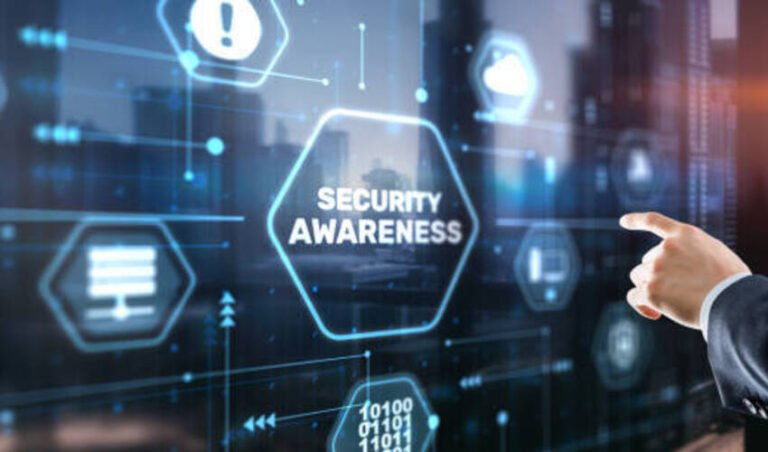Effective cybersecurity awareness training is crucial because the comprehensive, in-depth curriculum helps turn personnel from a weak link into a human firewall. It will aid in detecting and preventing a significant number of breaches and cyberattacks.
Introduction
Cybersecurity awareness training is a program created to inform organizations and people regarding the significance of cybersecurity. It also teaches them ways to protect themselves from cyber threats. The main objective is to allow users with the skills and knowledge to detect and eradicate possible security risks.
Here are 10 popular cybersecurity awareness topics you need to cover for the training.
Phishing Awareness
Your employees are required to know about the ways to detect phishing attempts. As a result, they are not tricked via email scams that entail outsiders camouflaged as trustworthy companies and people. Points that must be included in the training module include:
· Assess sender email addresses closely to evaluate for any slight deviations and misspellings from the regular address.
· Inspecting URLs within emails before clicking them.
· Find phishing language signs like poor grammar and spelling, generic greetings, and urgency.
Also read: 7 Tried and Tested Techniques To Detect Phishing Emails In Less Than 30 Secs – Diginatives
Authentication and Password Security
Convey to learners that the degree to which passwords are unique and solidly amalgamated with multifactor authentication (MFA) importantly decreases the risk associated with unauthorized access to their accounts.
Social Engineering Defense
Threat actors must not limit themselves to old phishing scams while trying to manipulate people to show confidential information, download malicious attachments, and click on suspicious links. Practical training must run through the complete range of social engineering methods that hackers could incorporate, including tailgating, baiting, and pretexting.
Safe Internet Practices
The majority of cyber breaches are rooted in unsafe internet practices. Guarantee that cybersecurity awareness training addresses tips like trusting a website with safe HTTPS connections, software from an untrusted website, or not downloading files at all. It also includes being mindful of what data employees share on networking platforms or social media like LinkedIn.
Email Security
Good email security awareness entails being cautious of links and attachments from unfamiliar sources, like reporting suspicious emails, and utilizing a spam filter. In addition, you must teach employees regarding the risk of sharing confidential data by email and the requirement for an encrypted connection.
Mobile Device Security
The boundaries between work life and personal life are blurring. Therefore, employees should understand the ways to safely utilize company-provided and personal smartphones when accessing work-related data. This entails utilizing the device’s fundamental features like promptly applying operating security updates and screen lock when notified.
Privacy and Data Safety
Employees play an imperative role in protecting the company’s confidential information. Awareness training must convey the significance of this function and assist employees in comprehending the way to guarantee availability, integrity, and data confidentiality.
Ransomware and Malware
Knowledge regarding ransomware and malware means expressing the degree to which malicious software can impact the systems. The two most common methods are spoofed or malicious websites and email attachments. It should include other relevant topics, such as the complexity of allowing Macros in Microsoft Excel or a functioning executable file from strange resources. Employees must be aware of the steps to take if they unintentionally download malware on their system.
Remote Working Security
Remote work security is more significant than ever because hybrid work is a mainstay option in numerous roles. An in-depth approach entails tips on boosting home internet security by modifying default router settings and upgrading firmware. Employees must be aware of the ways to secure devices from unauthorized access and theft, other than the home internet network. It is very important to have a strong familiarity with the company’s remote work rules.
Cloud Security
The employees who incorporate any cloud service are required to know about particular cloud practices, like:
- Just utilizing approved and vetted apps
- Sharing information safely
- Utilizing configuration management tools to eradicate misconfigurations
- Encrypting information before uploading it to cloud services.
Conclusion
Guaranteeing that your team attains cybersecurity knowledge training that covers a wide variety of topics with the latest updates is important to ensure it is effective. However, it is equally important to make sure that important information is reserved- and this comes down to the way it is taught.
Frequently Asked Questions (FAQs)
What is meant by cyber security awareness training?
Cybersecurity awareness training is a program created to inform organizations and people regarding the significance of cybersecurity. It also teaches them ways to protect themselves from cyber threats. The main objective is to allow users with the skills and knowledge to detect and eradicate possible security risks.
What are some topics that must be included in the cybersecurity awareness training program?
· Phishing Awareness
· Authentication and Password Security
· Social Engineering Defense
· Safe Internet Practices
· Email Security
· Mobile Device Security
· Privacy and Data Safety
· Ransomware and Malware
· Remote Working Security
· Cloud Security






